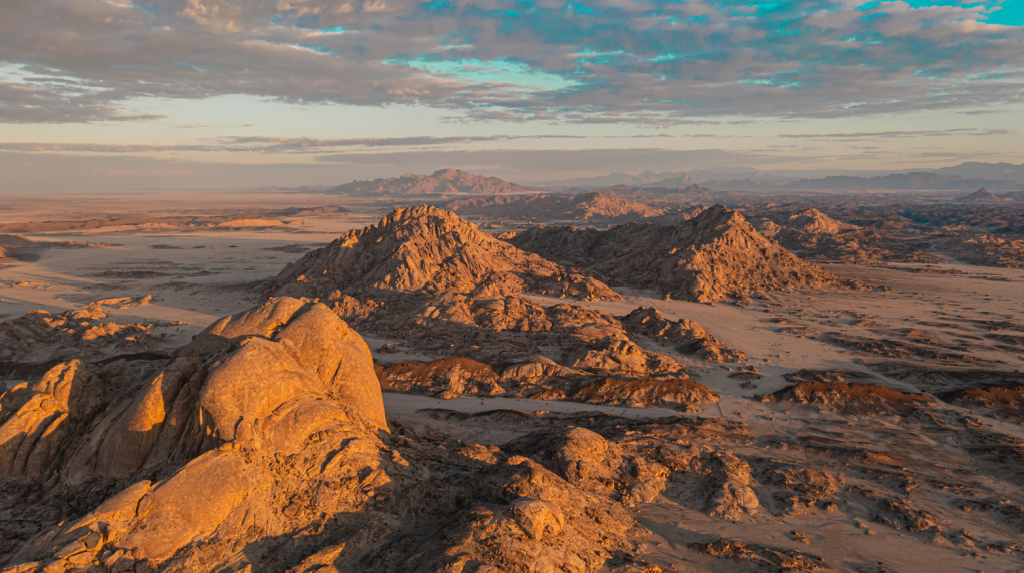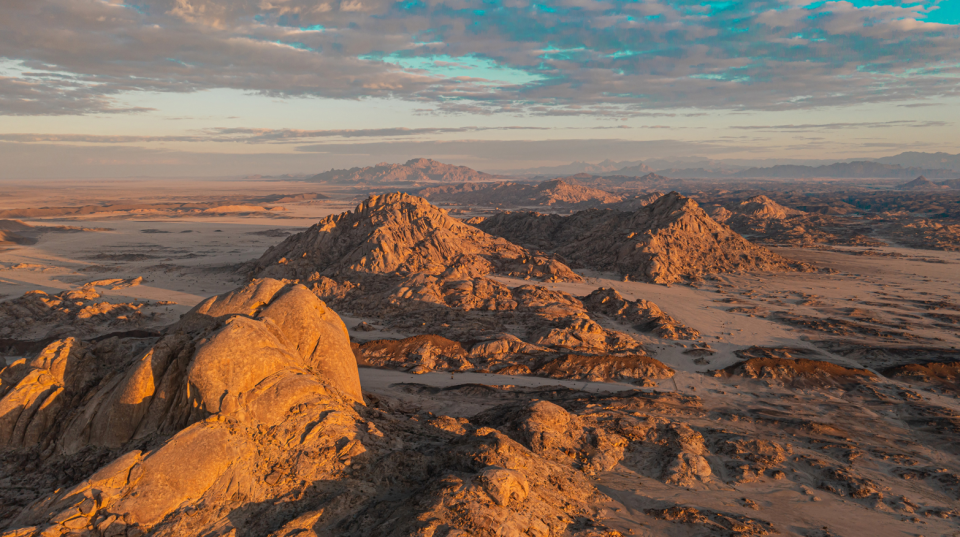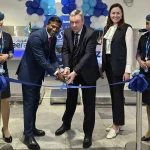Red Sea Global (RSG), the visionary developer behind The Red Sea and AMAALA, has just published some majorly impressive findings from one of the most comprehensive terrestrial baseline surveys ever undertaken by a developer. And frankly, it’s a game-changer!
This isn’t just about conservation. It’s a loud and clear message to everyone in travel sector that luxury tourism and environmental stewardship aren’t just compatible, they are set to thrive together here.

Discoveries that redefine a region
Partnering the Biodiversity and Genetic Resources Research Center (BIOPOLIS/CIBIO) from the University of Porto in Portugal, RSG’s “Terrestrial Spatial Habitats Assessment for Biodiversity Conservation” report lifts the lid on more than 13,000 km² of spectacular ecosystems. We’re talking vast deserts, dramatic volcanic fields, vital wetlands, lush mangroves, and soaring mountain ranges – all across 120+ sites.
And the fieldwork? Just jawdropping! They’ve identified several species potentially new to science. Yep! Distinct creatures previously unrecorded by scientists. Imagine, a scorpion (Trypanothacus sp.), two geckos (Hemidactylus sp. and Tropiocolotes sp.), and even a small mammal (Gerbillus sp.). This is massive, especially when you consider how little we knew about this region’s biology before. These discoveries aren’t just exciting and fascinating. Theyspeak powerfully of the sheer unique ecological value of these arid environments, which, let’s be honest, are often dismissed as being a bit barren. Well, turns out, they’re brimming with life!
“This survey marks yet another important step in our continued efforts to protect and enhance the region’s landscape and wildlife. We now know exactly where these habitats are, what species they support, and what steps we need to take to protect them. By embedding this kind of scientific research into planning, we’re showing that luxury tourism and environmental preservation are not only compatible, but they can also be brought together to deliver long-term benefits for both the environment and our visitors.” – John Pagano, Group CEO of Red Sea Global
Identifying Key Biodiversity Areas for future protection
It’s not just about shiny new discoveries, though… The report has also pinpointed 11 local Key Biodiversity Areas (KBAs). These are specific sites, recognised by the International Union for Conservation of Nature (IUCN), that are crucial for maintaining biodiversity. These new KBAs are jam-packed with a remarkable array of flora and fauna, including species that are endemic or locally threatened.
These newly identified KBAs are vital habitats for 136 species of local conservation concern, making up nearly a quarter of all the diversity found in the Red Sea zone. Importantly, this deep, scientific understanding is going to directly shape RSG’s land-use, restoration, and conservation strategies as The Red Sea and AMAALA continue to take shape. And here’s the kicker – it’s a massive step towards RSG’s ambitious goal of achieving a 30% net conservation gain by 2040. What does that mean? Basically, the region will boast more or better quality habitats than before development even started. How’s that for commitment?
Why any of this matters to travel providers and advisors
Alright, let’s cut to the chase. For anyone in the travel industry, especially those looking to sell this stunning new region, these findings are GOLD! Here’s why … This isn’t just about pretty pictures. It’s about providing you with real, tangible proof of an incredible story that will resonate with your clients.
1. Proof of genuine regenerative tourism: this extensive research hands you concrete evidence of Red Sea Global’s commitment to true regenerative tourism. We all know “greenwashing” is out there, but this scientific baseline offers irrefutable proof that The Red Sea and AMAALA aren’t just talking the talk; they are actively enhancing the natural environment.
What does this mean? This means you can confidently market these destinations to those increasingly savvy, luxury-seeking clients who demand genuine sustainability. And as we know, more travellers are asking for it.
2. The “wow” factor: the sheer excitement of discovering potentially new species and identifying unique Key Biodiversity Areas adds a “wow” factor that’s pretty hard to beat. Let’s be honest, who doesn’t want to visit a place where new life is still being found, or where their trip genuinely contributes to preserving critically endangered species?
Why does it matter? Well, this is a unique selling proposition that goes way beyond just luxurious resorts. It offers a deeper, more meaningful travel experience. And for travellers, it’s about being part of something bigger, something truly special.
3. Authentic, immersive experiences: this deep ecological understanding means that the experiences developed here will be authentically immersive and deeply connected to conservation efforts. This isn’t just about observing at nature from afar. It’s about being actively involved in its protection and understanding its intricate balance.
How to leverage this? For travel agents, this translates directly into fantastic itinerary opportunities – think specialist eco-tours focused on observing these unique species, or exclusive access to areas where pioneering conservation work is happening. It’s a compelling narrative that absolutely sets The Red Sea and AMAALA apart, attracting those high-value clients who seek not just a getaway, but genuine enrichment and purpose in their travels.
Ultimately, Red Sea Global’s dedication to robust scientific research and conservation is giving everyone in the travel industry a powerful, authentic, and truly exciting story to tell and experience.
A glimpse into the Red Sea Zone’s ecological riches
Now back to the findings, which highlighted the ecological significance of the Red Sea zone, documenting some incredible finds:
- 41 locally threatened species, including the critically endangered Arabian Woodpecker, the endangered Nubian Ibex, and the vulnerable Egyptian Slit-faced Bat and Bonelli’s Eagle.
- 88 locally geographically restricted species, with several that could be new to science – just showing how much there still is to learn.
- 19 species found exclusively in the Arabian Peninsula, like the Arabian Sunbird and the Hejaz black-collared snake, adding to the region’s unique charm.
- 18 species displaying local demographic aggregations, meaning there are specific spots these populations rely on for breeding, feeding, or shelter.
Spotlight on the 11 newly identified Key Biodiversity Areas

And if you’re interested in the new KBAs, here’s what you can look forward to exploring or learning more about:
- Al-Wajh Bank (2,835 km²): A globally vital bird breeding and migratory stopover, with 45% untouched “Last of the Wild” areas supporting 3 flora and 21 fauna species of conservation concern.
- Harrat Lunayyir (1,211 km²): Volcanic landscapes, 45% “Last of the Wild,” providing a haven for 7 flora and 19 fauna species of conservation concern, including Bonelli’s Eagle.
- Jabal Saykhaan (1,643 km²): Mountainous terrain and wadis, home to 16 flora and 16 fauna species of conservation concern, such as the Arabian Woodpecker and Peregrine Falcon.
- Upper Wadi Alhamd (976 km²): A crucial wadi system with vital water resources, 33% “Last of the Wild,” sheltering 1 flora and 9 fauna species of conservation concern, including the Arabian Wolf and Nubian Ibex.
- Wadi Khuff (38 km²): A mountain canyon with critical freshwater springs, supporting 10 fauna species of conservation concern, like Hemprich’s Desert Bat.
- Wadi Al Hamd (383 km²): A wadi system with significant wetlands, 53% “Last of the Wild,” providing refuge for 7 flora and 16 fauna species of conservation concern, including the Arabian Woodpecker and Eurasian Spoonbill.
- Jabal Qawwam (772 km²): Mountainous area with a permanent dam, a critical water source supporting 7 flora and 13 fauna species of conservation concern, such as the Pharaoh Eagle-owl and Oman toad.
- Jabal Ral and Northern Areas (1,163 km²): Diverse mountains, wadis, and plains supporting 14 flora and 25 fauna species of conservation concern, including threatened and endemic species like the Peregrine Falcon.
- Triple Bay Mountains (692 km²): Mountainous terrain and streams, 26% “Last of the Wild,” providing habitat for 12 flora and 22 fauna species of conservation concern, including important bat roosts.
- Amaala Coastal Mangroves (35 km²): A critical marine/terrestrial KBA for a variety of species, including globally/locally threatened ones, supporting 4 flora and 7 fauna species of conservation concern.
- Amaala Northern Mountains (1,086 km²): Mountains with 21% “Last of the Wild,” supporting 13 flora and 13 fauna species of conservation concern, including various mountain-adapted bats and owls.
The findings not only build on RSG’s 2022 Environmental Base Survey, which examined the populations and habitats of species along the Red Sea coastline, but also support Saudi Arabia’s national environmental goals under the Saudi Green Initiative and align with global biodiversity targets under the UN Convention on Biological Diversity.
Also read: Red Sea Global brings sustainable aviation fuel to the Kingdom for the first time



